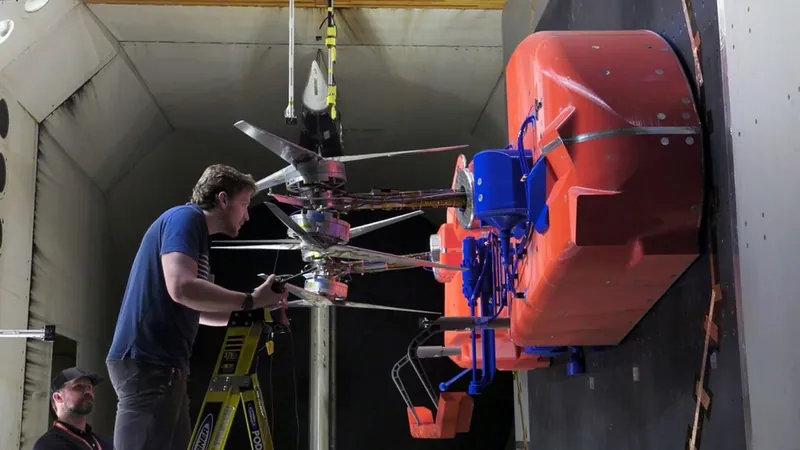
NASA's Epic Journey to Titan: A Mission on the Rise
2025-09-09
Author: Ting
Revolutionizing Space Exploration
NASA's groundbreaking mission to explore Titan, Saturn's intriguing moon, is making headlines again, but not without some bumps in the road. An independent report has revealed that while the mission is currently over budget and behind schedule, the reason lies more in NASA's management than in the mission's design.
Budget and Timeline Shifts
Originally estimated at $850 million when selected in 2019, the budget for the Dragonfly mission has skyrocketed to an astonishing $3.35 billion. Moreover, the launch date has been pushed back from 2026 to 2028. Though NASA had previously disclosed these issues, this new report clarifies that the delays and cost increases stem from internal management decisions rather than technical failures.
Funding Woes and Pandemic Impact
The report highlights that the Johns Hopkins University Applied Physics Laboratory, responsible for developing the spacecraft, did not receive the necessary funding in its early years. NASA directed the team to go through several extensive "replans"—a process that further complicated the mission's timeline and budget. The onset of the COVID-19 pandemic only exacerbated these challenges, alongside supply chain disruptions and uncertainties regarding NASA's Congressional funding.
Dragonfly's Resurgence
Despite these setbacks, the Dragonfly mission is gaining momentum! Bobby Braun, head of APL's Space Exploration Sector, expressed enthusiasm for the team's recent progress: "The Dragonfly team is killing it! Probably the best part of my day is watching that team hit their milestones." With the spacecraft's hardware and software development on track, there is renewed hope for a launch aboard a Falcon Heavy rocket in July 2028, set to land on Titan by 2034.
A Terrifying Descent Awaits
But let’s not sugarcoat it—landing on Titan is no easy feat. Unlike the 7 minutes of intense landing drama experienced by the Curiosity rover on Mars, our Dragonfly spacecraft faces a daunting 90-minute descent through Titan’s thick atmosphere. Braun describes it as "90 minutes of terror!" The mission will rely heavily on data gathered by the Cassini spacecraft and its Huygens probe, the latter having landed on Titan in 2005.




 Brasil (PT)
Brasil (PT)
 Canada (EN)
Canada (EN)
 Chile (ES)
Chile (ES)
 Česko (CS)
Česko (CS)
 대한민국 (KO)
대한민국 (KO)
 España (ES)
España (ES)
 France (FR)
France (FR)
 Hong Kong (EN)
Hong Kong (EN)
 Italia (IT)
Italia (IT)
 日本 (JA)
日本 (JA)
 Magyarország (HU)
Magyarország (HU)
 Norge (NO)
Norge (NO)
 Polska (PL)
Polska (PL)
 Schweiz (DE)
Schweiz (DE)
 Singapore (EN)
Singapore (EN)
 Sverige (SV)
Sverige (SV)
 Suomi (FI)
Suomi (FI)
 Türkiye (TR)
Türkiye (TR)
 الإمارات العربية المتحدة (AR)
الإمارات العربية المتحدة (AR)